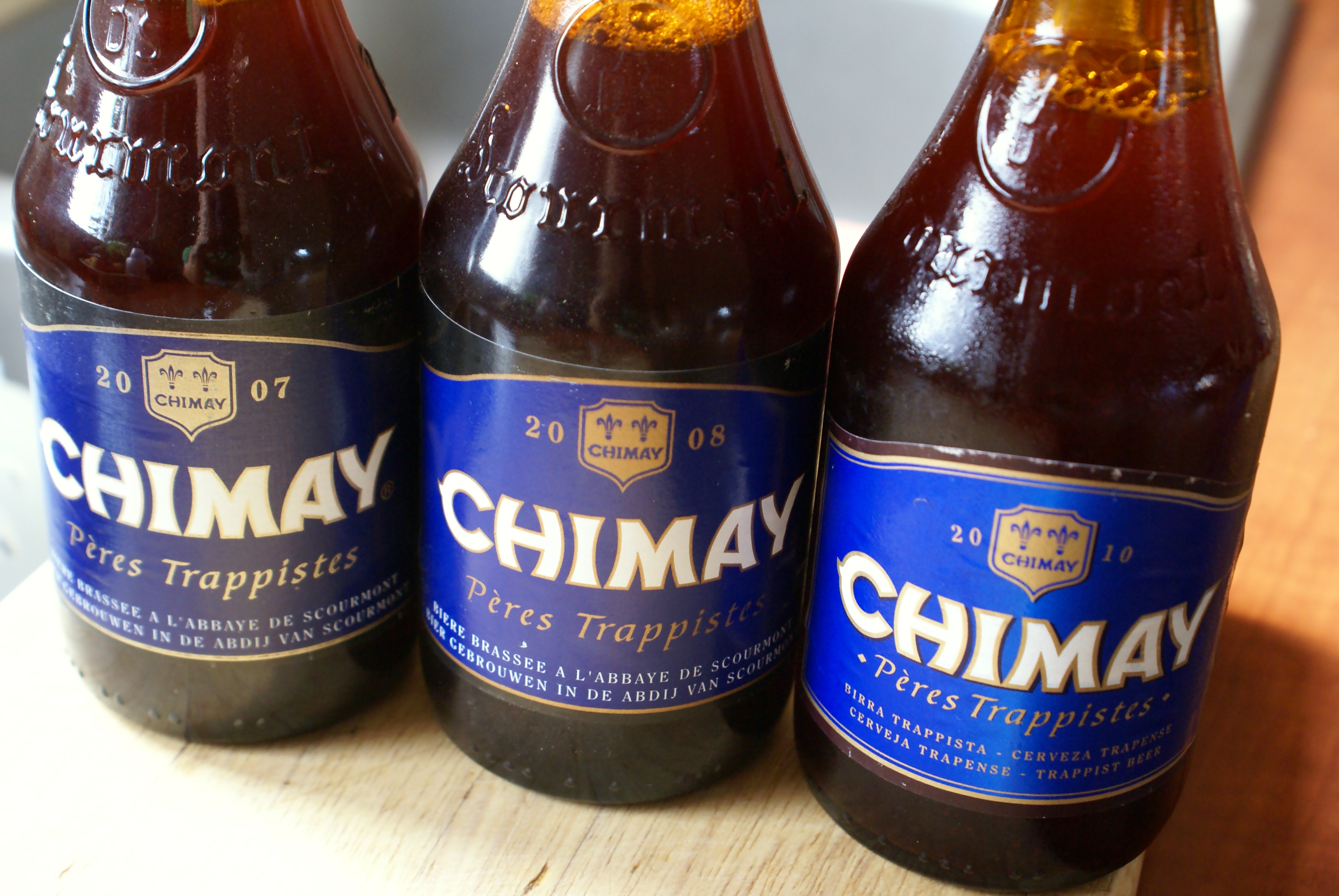Vintage beer
Posted on 16 August 2011
Can beer age? Usually you just buy beer from the shelf and drink it, so I reckon very few people ever ask the question. Similarly to tea, beer is considered a perishable commodity that is ‘fast-moving’ as per the trade jargon. (I discussed the lifespan of tea here).
Yet among beer aficionados it’s no secret some brews can actually improve with age. Like with wine, the beer needs to be powerful enough to have anything to gain from cellaring. This category includes some English real ales as well as Belgian beers – most of which are usually top-fermented and concentrated enough, as well as having a higher alcohol (typically 6–10%) that also favours evolution in time.
One of the classic vintage beers of Belgium is Chimay Blue Label that has been made at the Abbey of Scourmont since 1862. It is one of the rare beers with the vintage on the label, and reputedly can age for up to fifteen years. Cellaring potential is superior in the natural cork-closed 750ml bottle, but this being unavailable in Poland, I have a look at three vintages of Chimay Blue in 330ml.
The 2007 has less gas than the other vintages here. It has a rich bouquet of malt, treacle and chocolate, with a coffee complexity that sets it apart. Tastes sweeter and richer than the 2008. It doesn’t seem so much evolved, but is more quiet, subtle and multi-faceted than the other two. The 2008 is strinkingly different. It has a more meaty, barnyardy, stinky (‘reduced’ as we say in wine terms) nose. On the palate the hoppiness is more pronounced, together with spicy notes (I identified coriander). Again this is fairly complex in taste compared to the 2010, but has less charm than the 2007; it also tastes drier, less malty-sweet.

Chimay Blue Label in 750ml bottle with its dedicated glass. © Chimay.
The 2010 comes as a surprise: it is a lot livelier than the 2008. There is more gas, but also definitely more fruit: if it were a wine I would call it ‘primary’. There is grapes, plums, and maybe even strawberries. It’s much more intense than the 2007, for example; full and assertive, but the fruity freshness also seems to better balance the malty sweetness. In all honesty it’s the one I prefer for its balance and intensity, although the 2007 is also an interesting experience looking for a more complex and subtle version of Chimay.
I’ve only gotten to four years in a small bottle, and will be keen on repeating the experiment with a 750ml cellared for longer, but it was a fascinating tasting. The differences between the three vintages were more obvious than I expected, and there’s definitely interest in ageing the best beers like this one.
Disclosure
All beers were my own purchases.


